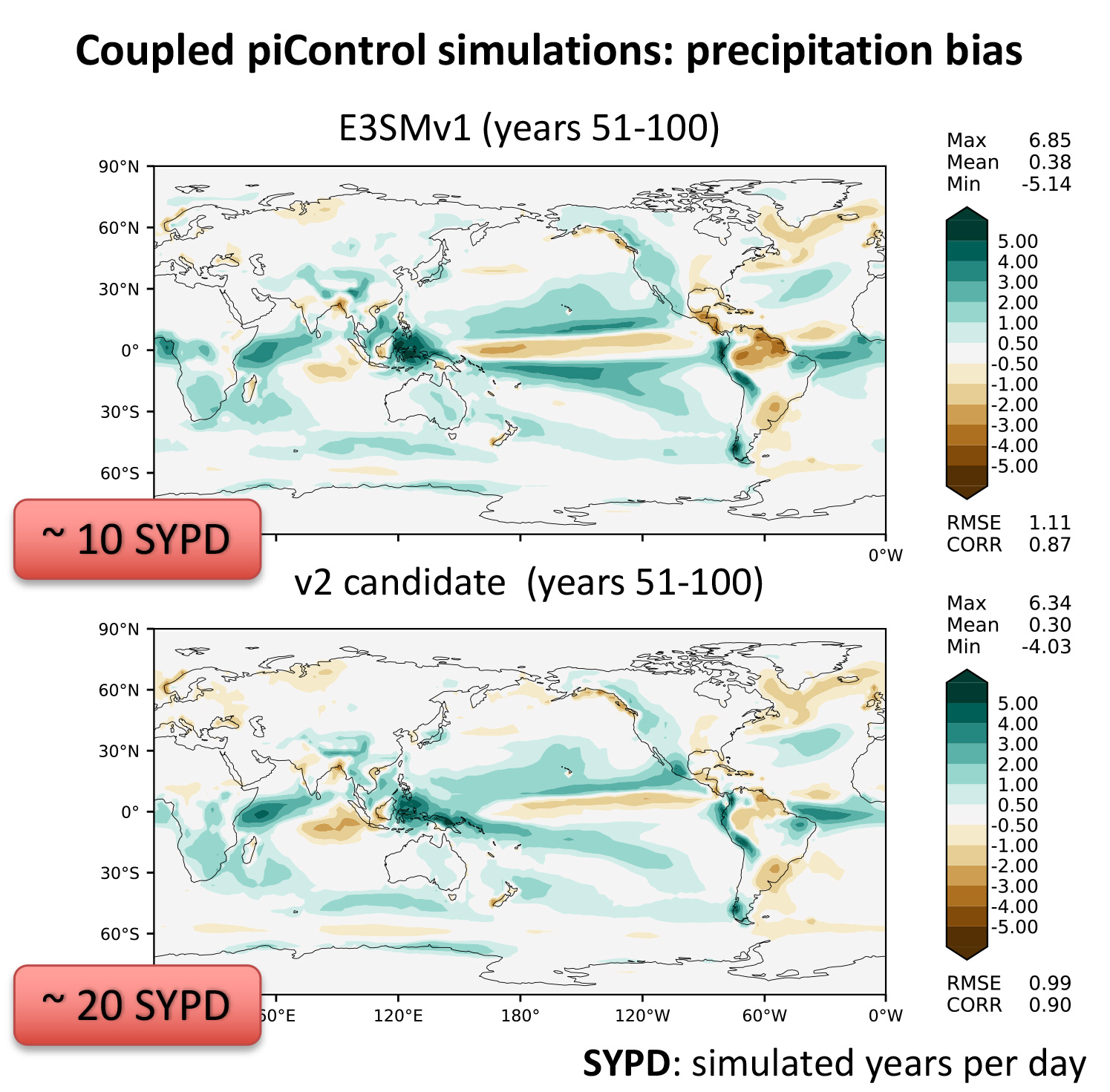V2 Water Cycle Campaign Code Will Be Tagged Soon
In March 2021, the E3SM project will tag the code base for the E3SMv2 Water Cycle low-resolution configuration (~100 km horizontal resolution in the atmosphere), less than three years after tagging the previous E3SMv1 version. Despite the short development cycle compared to typical Earth System Model cycles of five to six years, E3SMv2 incorporates a number of improvements compared to E3SMv1. Among them are:
- A new spectral element nonhydrostatic dynamical core (running in hydrostatic mode) with semi-Lagrangian tracer transport,
- A physics grid that reduces the cost of atmospheric physics calculations without sacrificing effective resolution,
- Improved cloud physics resulting in reduced cloud and precipitation biases,
- Reformulated ozone chemistry with more realistic tropospheric exchanges,
- Redi mixing in the ocean,
- More realistic treatment of snow on sea-ice, and
- A new Input/Output (I/O) library (SCORPIO).
Overall, E3SMv2 is expected to be better and faster than its predecessor.
Figure 1 illustrates some reductions in precipitation biases. Particularly notable is the reduction in the double-ITCZ, Amazon dry bias, and excessive precipitation over high elevations (Tibetan Plateau, Andes, and Western North America).
Regarding numerical performance, E3SMv2 is twice as fast as v1. On the BER supercomputer ‘Compy’, it achieves approximately 20 simulated-years per day (SYPD) using 90 nodes, compared to 10 SYPD using 92 nodes for v1.
Following the code tag, the Water Cycle will start the low-resolution simulation campaign. The first phase of the campaign will include a spin-up simulation followed by a pre-industrial control simulation. From there, scientists will branch an ensemble of historical simulations spanning the period 1850 to 2015 as well as some idealized CO2 forcing simulations (1% per year increase and abrupt quadrupling). The simulation output will be made available publicly after publications describing them have been submitted.
In parallel, work continues on finalizing the Water Cycle regionally-refined configuration of E3SMv2. Stay tuned for more information in the future.



